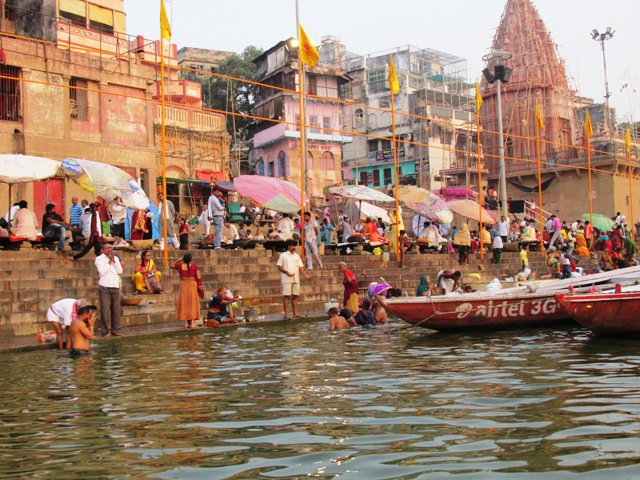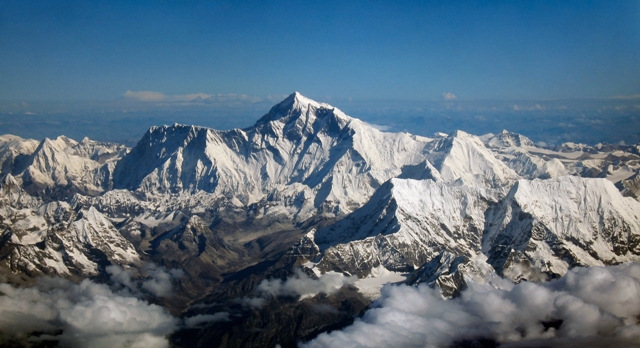Heber Tours His Vast Episcopate.
Heber planned to visit many cities in Northern India and eventually get to Bombay in Western India , all being part of his vast diocese. He embarked on a tour, on June 15 which will take the better part of a year. His retinue included Martin Stowe, his domestic Chaplin, Archdeacon Michael Corrie, his wife and family, and a small company of servants. He sailed out on the river Hoogly in four boats, two small craft for baggage and kitchen, a barge for the Corries, and a 16 oar penance for Bishop Heber and his Chaplin.
He travelled up the river Ganges to the holy city of Benares , and then onto Allahabad , yet another holy site in Hinduism, situated at the confluence of the great Ganges and Yamuna rivers, preaching on route and at every station, confirming new Christians and administering the Sacrament.
 |
|---|
Heber Travels Overland
At Allahabad , they decided that further travel will have to be overland. The caravan consisted of twenty four camels, three elephants, eight bullock carts, the Arch deacon's horse and buggy, and a Turkestan steed that Heber had bought for himself. There were two dozen horse servants, forty other servants and coolies, twelve tent pitchers, and a guard of twenty armed sepoys. It must have been an impressive procession – imagine our Bishop embarking on a tour of her episcopate in this grandeur!
At Lucknow , the magnificent capital of the Kingdom of Oudh , he had the opportunity to have breakfast with the Nawab, who was an independent, powerful, and erstwhile vassal of the mighty Mughals. It was a tame affair, though they got along famously, with Heber connecting through his passable Hindustani. Heber compared him to King James the First which would have pleased the Nawab immensely.
Hardships and Sorrow.
It had been a hard journey; his friend and spiritual companion Martin Stowe fell ill and died. At one stage, on receiving news that his wife and daughters were unwell, he was tempted to abandon his arduous tour and return to his stricken family in Calcutta . But on receiving a further letter that his family was now well he decided to carry on. During the journey Heber himself fell ill, and had to be carried in a palanquin. His personal valet Abdullah thought that the Bishop will die, and lamented his premature end; but he survived.
 |
|---|
The Himalayas.
On November 25, now five months on the road, he made a short detour into the Himalayas, visiting Almora, a small Gorkha kingdom in the mountains, where he had his first glimpse of the Himalayan snow clad peaks. He wrote in his diary: “And now the snowy mountains which had been so long eclipsed opened on us in full magnificence. To describe a view of this kind is only lost labour, and I found it nearly impossible to take a sketch of it. Everything around was so wild and magnificent that man appeared as nothing, and I felt myself as if climbing the steps of God's great temple.”
Heber was not naïve about British popularity, and in fact was critical of British policy of discrimination against the Indians. He believed that the only distinction of persons recognized in the Gospels is of those we love and those we ought to love. He found that Almora, a hill town, and a Gorkha fortress were a place where the British were accepted. On November 28, 1824, Heber celebrated the Holy Communion, and preached to a congregation of thirty-five officials and army officials, under their commandant, Sir Robert Colquhoun; later to acquire fame as a distinguished plant collector – the evergreen genus Colquhounaia was named in his honour.
 |
|---|
Audience with the Mughal Emperor
The climax of his tour was the audience accorded him by the Mogul Emperor Akbar Shah at the Red Fort in Delhi . Although it had all the pomp and ceremony of being announced to the Emperor, the scene was rather pathetic and tragic, for the great mogul empire had now been reduced to just the precincts of the Red Fort, occupying but 250 acres; the rest of the sub- continent of India being ruled mostly by the British of East India Company, and independent princely rulers. Incidentally, the Red Fort was built by Emperor Shah Jahan, (the builder of the Taj Mahal) and would have seen glorious days in the golden age of the Mughals. It was the seat of the empire, the Koh – e – noor; world's most famous diamond adorned the Mughal crown. The emperor ruled his vast empire from the jewelled peacock throne, and the splendour of the court was perhaps unmatched anywhere in the world. But sadly those days were gone, and the Mughal Emperor now presided over what remained of it, just 250 acres. But pomp and ceremony was the norm, and royal protocol and court etiquette was strictly observed.
‘Sahib' is an Urdu word that was introduced into the English language, and was a deferential and obsequious form of address to a European.
Bishop Heber's servants and Indian staff used to address him as ‘Lord Bishop Sahib', and that is how he would have been announced by the sentries, when he arrived at the gates of the great fort. They in turn would have shouted ‘Lord Bishop Sahib, Reginald Heber …etc.' to the next sentry at the next gate, and so forth, until he arrived at the inner sanctum, and the throne room to meet the emperor.
Bishop Heber had a cordial meeting and presented to the Emperor an Arabic Bible, and an Urdu prayer Book. From Delhi he went to Agra , where he ordained Abdul Masih, formerly Master of Jewels at the palace of the Oudh king, and now a Christian missionary. He no doubt would have visited the Taj Mahal.